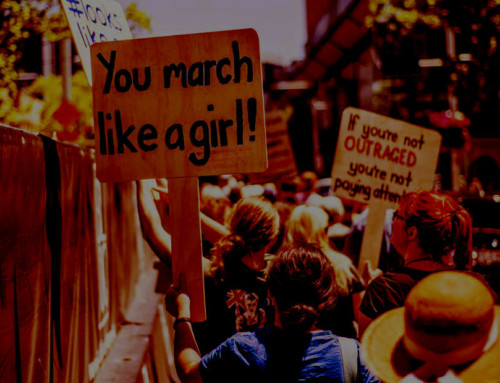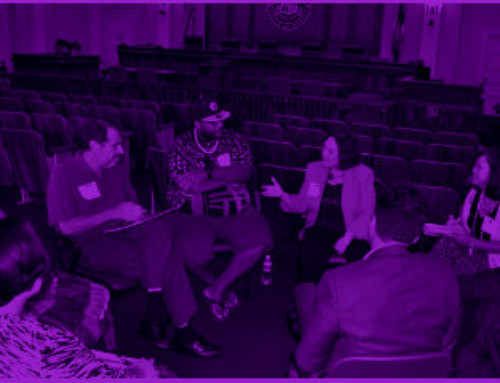Over nine days in late May-June 2016, Derick Wilson, Kirsty Campbell and John Braithwaite had thirty meetings with diverse public, political, civic and community organisations in Belfast, Dublin, Derry and Ballycastle. These meetings were hosted by two reconciliation charities, the Understanding Conflict Trust and the Corrymeela Community on the theme of ‘The Politics of Hope and Reconciliation’.*
(*This blog is cowritten by John Braithwaite, Derick Wilson and Kirsty Campbell.)
Since then, of course, a great new sense of uncertainty has been created in Northern Ireland by the Brexit vote.
Our visits culminated in attending a political conference at the Corrymeela Centre addressed by the President of Ireland, Michael D Higgins, attended by politicians and members of diverse civil society groups from Northern Ireland and the Republic of Ireland.
The Conference on the theme ‘Living Well Together Beyond 2016’ was fifty years on from the first political conference at Corrymeela in 1966 when the, then, Prime Minister of Northern Ireland, Terence O ‘Neill, made a speech proposing that it was time for Catholics and Protestants to govern together! The Conference was a joint initiative by the Irish Association and the Corrymeela Community.
There is so much that is inspiring about the 1998 Good Friday Agreement and Northern Ireland’s struggle for peace in the 18 years since. At the same time, as one former leading Loyalist paramilitary leader bitterly put it: ‘The Good Friday Agreement was a ship that was launched but never fitted out.’ Another leader in that meeting used the example of the Titanic quarter in Belfast being sold as an initiative that would promise his community lots of jobs as a peace dividend but where those jobs did not arrive for them
The Peace Agreement of 1998 has enabled many new jobs to be created in Northern Ireland[1] however there have also been the impacts of deindustrialization. At the same time, historical political insecurity has deterred some investment, leaving many people in working class communities, nationalist and unionist, disillusioned[2]. While more than 80 per cent of the people of Northern Ireland have been liberated from fear of bombings and shootings in their own neighborhoods, a minority in the poorest areas have been left behind by the peace. They live in fear of drug gangs and some remaining loyalist and republican paramilitary organizations which continue to inflict punishment beatings, expulsions, kneecappings and other shootings on young people who meet their displeasure.
In Section A of ‘A Fresh Start’, the agreement between the major parties in November 1998, facilitated by the British and Irish Governments, the task of ‘Ending Paramilitarism and Tackling Organised Crime’ was agreed as a priority (see pp 14-18 of the Agreement).
A three-person panel was appointed by the Executive with the task of bringing back recommendations for a strategy to disband paramilitary groups for agreement and action before the end of May 2016. We met members of this panel on the day after they had submitted their report.
Community restorative justice has had, and continues to have, a role to play in this peace process. In many neighbourhoods of Northern Ireland formerly armed groups have abandoned social control by punishment beatings and shootings in favour of community problem solving through restorative justice. One possibility for the future is to persuade all remaining paramilitaries to renounce punishment beatings, shootings and expulsions, to renounce military structures that continue to bestow military titles like brigadier and commander upon paramilitary remnants, to renounce the drug trade and to embrace participation in community restorative justice that is accredited by the Criminal Justice Inspectorate.
That will be a hard challenge because these people feel so “demonized” (the word they used to us), excluded from the peace and stigmatized by politicians of the major political parties. Making a politics of inclusion work for them will not be easy.
While the community restorative justice programs led by former republican and loyalist prisoners have been successful programs that have contributed to the comparatively low post-conflict homicide rate in Northern Ireland, the time has come to re-invigorate restorative justice and its standards of practice.
One idea we were floating with community groups was for somewhere in Northern Ireland to take the fresh start to renewal of establishing a ‘restorative community’ or a ‘restorative city’ that is part of the learning community that embraces cities like Halifax, Whanganui, Leeds, Hull, Burlington and Canberra. This means a whole community approach to restorative justice where restorative justice as a replacement for punishment beatings learns from restorative justice in the health system, the education system, in child protection and disabilities and in human rights commissions.
Another idea we discussed widely involves a restorative renewal of victim support complementing the valuable work of the current Commission for Victims and Survivors and the Victims and Survivors Service. As in all other armed conflicts, many individual victims still feel that their individual needs have not been responded to. Their expectations of transitional justice have not been met, in spite of large public investments in this.
So we wonder if a targeted pilot restorative community might invest, with outside funding support, in offering all families that were victims of the conflict in that area a renewed, individualized restorative process concerning that victimization. Not all would want it of course. Some might even be satisfied with the support they have already received.
The sequence of restorative meetings with them would put them in contact with resources their family might still need for dealing with PTSD, alcoholism, drug abuse and anger. It might help with adult educational and job placement opportunities for victims who missed out on parts of their childhood as a result of the conflict. If they wish to meet with perpetrators, IRA or Loyalist paramilitary leaders from their area, that facilitation can be attempted. If they were victims of police and army actions the same process would apply. If they wish to create a record of their suffering, or their aspirations for a transformed future, to be lodged with a local museum of memory, that should be facilitated.
We were always impressed by the way the President of Chile sent a signed letter to every family of a disappeared person with Chile’s Truth Commission report. Such a victim-affirming thing for a President to do.
In such a letter from a relevant body or leader in Northern Ireland to every victim family in the pilot it would be possible to address whether the remains of the victim had been located or not; whether prosecution had been launched or not; whether prosecutions might be initiated; what steps were being taken, what had been done, what further investigative steps would continue and what could not reasonably be expected. Likewise, if no further compensation or educational or welfare support could be provided, there could be an apology for the limits of the support for victims that was possible under the finite victims support budget appropriated by the elected legislature.
These are no more than ideas for extending the writ of restorative peacebuilding in Northern Ireland. They sound ambitious. But Northern Ireland is a place we look to for taking transitional justice up through new ceilings of excellence. As one official put it: not everyone has the resources to push a politics of hope, to re-story Northern Ireland in a restorative way. But for those of us who do, we have a “duty of hope”.
[1] For example, refer to this article.
[2] See The Community Relations Council’s Peace Monitoring Report here.






Leave A Comment